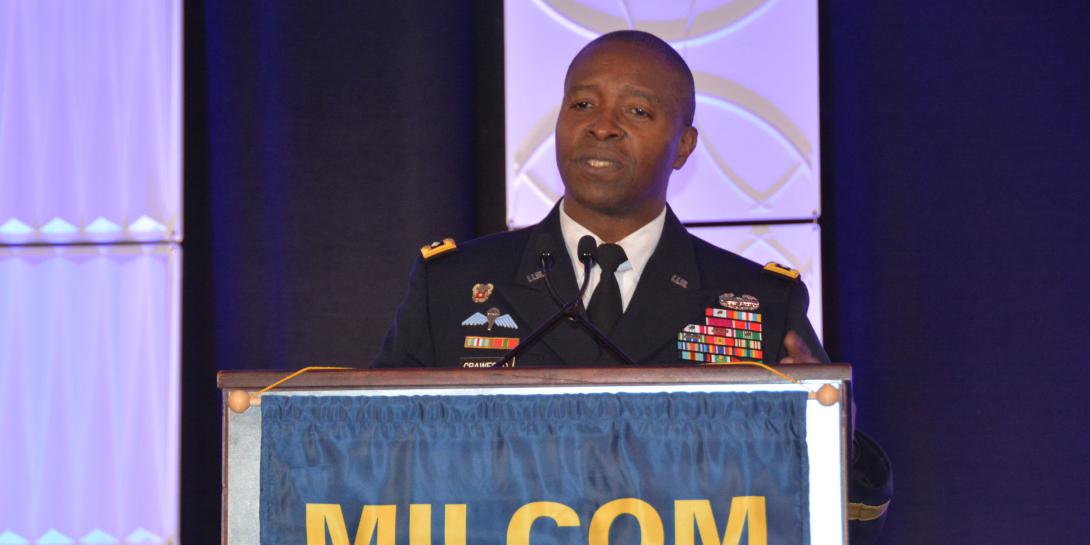Army CIO Turns the Focus to the Enterprise
The U.S. Army has spent the last year undertaking some of the most significant changes for the service in decades: outlining a modernization plan; defining six modernization priorities; standing up eight cross-functional teams; and creating the Futures Command, among other efforts.
One year ago, Army Undersecretary Ryan McCarthy and Chief of Staff Gen. Mark Milley, USA, identified the services’ six modernization priorities, which included long-range precision fires; next-generation combat vehicles, future vertical lift platforms, a modern Army computer network, air and missile defense capabilities, and improved soldier lethality.
A big part of this effort for Lt. Gen. Bruce T. Crawford, USA, the Army’s chief information officer (CIO) and G-6, was the close examination of the service’s network, from the tactical edge to the command post environment.
“The past 12 months, we've invested quite a bit of intellectual energy outlining the characteristics, the requirements and the attributes of what we believe to be our future network,” Lt. Gen. Crawford said.
The Army CIO shared his perspective as the luncheon keynote address at the Institute of Electrical and Electronics Engineers (IEEE) and AFCEA International’s MILCOM conference in Los Angeles on October 29, as well as during an interview with SIGNAL Magazine.
“I think we're in a different place than we were just 12 short months ago,” Gen. Crawford noted. “And a big part of that coming together had to do with the leadership of the Army putting us on a path and driving us towards institutional change. To me as a CIO, those six modernization priorities have become the absolute focus of our network modernization efforts. The network is the thing that binds it all together.”
For the Army to be ready, it has to address two cross-cutting capabilities, which Crawford attests are “absolutely critical” to achieving the Army's vision of operationalizing the six modernization priorities. Warfighters have to be able to access to the network “anywhere, at anytime, from the end points to the enterprise.” In addition, the Army has to be able to defend the network in all domains. Gen. Crawford works closely on this with Lt. Gen. Stephen Fogarty, USA, commander of U.S. Army Cyber Command, the operational commander responsible for defending the ARCYBER portion of the DOD network.
"We’ve invested quite a bit in the last 12 months on two cross-cutting capabilities: access to the network, anywhere, and defense of the network in all domains," says Army LTG Crawford @ArmyCIOG6 #MILCOM
— Kimberly Underwood (@Kunderwood_SGNL) October 30, 2018
Additionally, the Army will sharpen its focus on the enterprise network. “In terms of the next 24 months, and things that you can expect from the Army, one is a renewed focus on the enterprise,” the Army CIO stated. “The enterprise is one of the foundational aspects of our ability to project power. And there are things that we got to fix, including our voice infrastructure and our data switching infrastructure that are at or near end-of-life. Then, there are things that we've got to optimize.”
Although the Army has plans to network both the soldiers and the weapons systems, the enterprise has yet to be optimized to account for that. “So that if the capability existed tomorrow, we wouldn’t be able to properly leverage it,” Gen. Crawford stated.
At #MILCOM in Los Angeles, LTG Bruce Crawford, USA, @ArmyCIOG6, speaks to how the industry is bringing innovation into the military, helping to save lives on the battlefield."Your efforts have been critical," he says. pic.twitter.com/WeWDEVxORo
— Kimberly Underwood (@Kunderwood_SGNL) October 30, 2018
As for the cloud, the Army’s cloud efforts are nested within DOD’s cloud effort, led by Dana Deasy, the DOD CIO, and his vision to create an enterprise cloud hosting environment. In addition, the service has formed a cloud advisory group to help deliver cloud-based capabilities to the Army. The service has seen initial success in the cloud, Gen. Crawford shared. He added that the next 24 months will include leveraging more cloud. The Army CIO has made moving Army applications to the cloud a priority. He set a goal for fiscal year 2019 of moving 10 percent of the Army’s 8,000 applications to the cloud, followed by an additional 30 percent for the three subsequent years.
When it comes to data and analytics, Gen. Crawford said that the Army’s starting point “is to go from the 1,137 or so data centers that the Army has its data disparately in and collapse that by 2022 into about 260 different data centers."
The U.S. Army also is working to flush out how it can harness artificial intelligence (AI) capabilities. First, the service is supporting the DOD’s Joint Artificial Intelligence Center (JAIC) created by Deasy. JAIC leaders have identified three national mission AI-related initiatives relating to intelligence, predictive analysis, maintenance and logistics, and humanitarian aid and relief.
The Army's IT community is in a race for talent. "We've come to realize that after this introspective review of our network. Most of the talent resides in your industry formations, not ours. We need to go through you to harness talent," says @ArmyCIOG6 #MILCOM
— Kimberly Underwood (@Kunderwood_SGNL) October 30, 2018
For the Army, Gen. Crawford is standing up an AI task force, meant to start building internal capabilities and help inform how AI could be applied across the Army’s six modernization priorities.
As for quantum computing, the general shared that, “I think we're a ways off from quantum computing.” In the meantime, the Army will work to better position itself for technological advancements.
“Our mindset when it comes to modernization is understanding what technological advancements are on the conveyor belt heading our way and starting to set conditions, so that when that technology becomes available, the Army is ready to leverage it,” Gen. Crawford said.





Comments